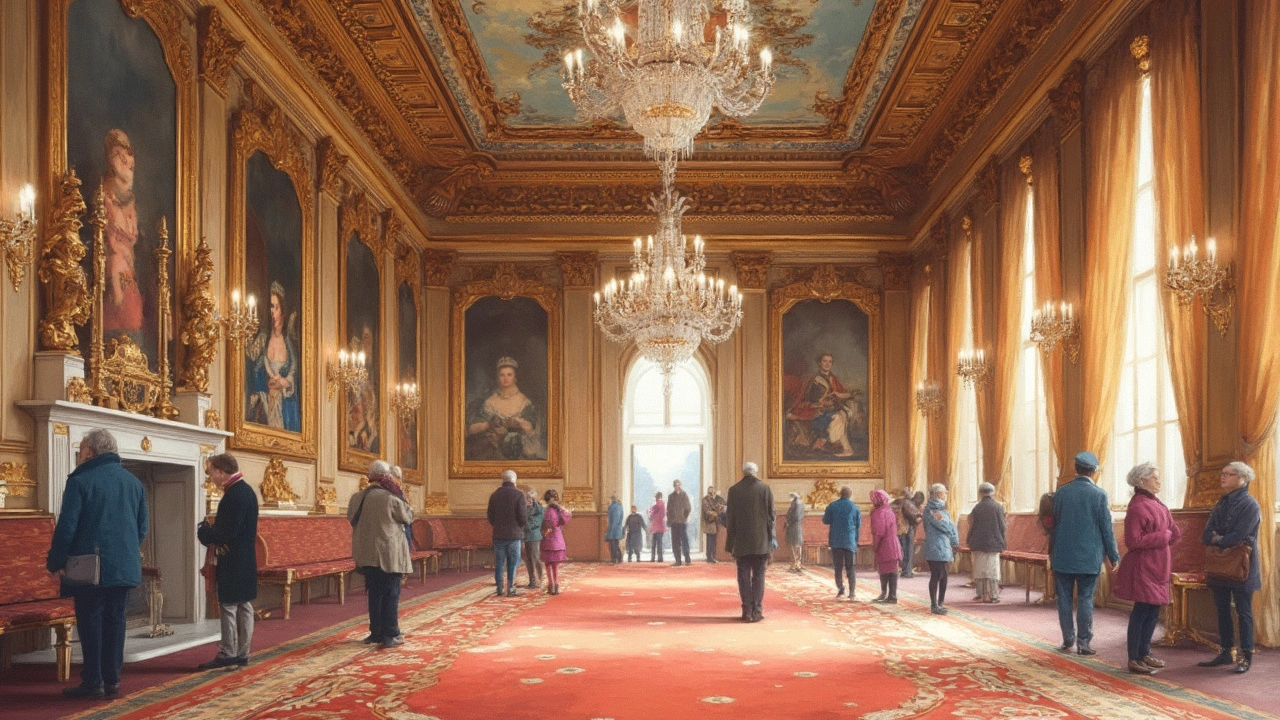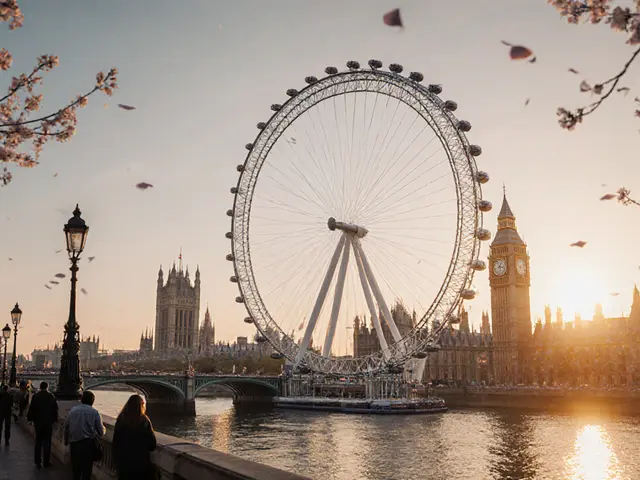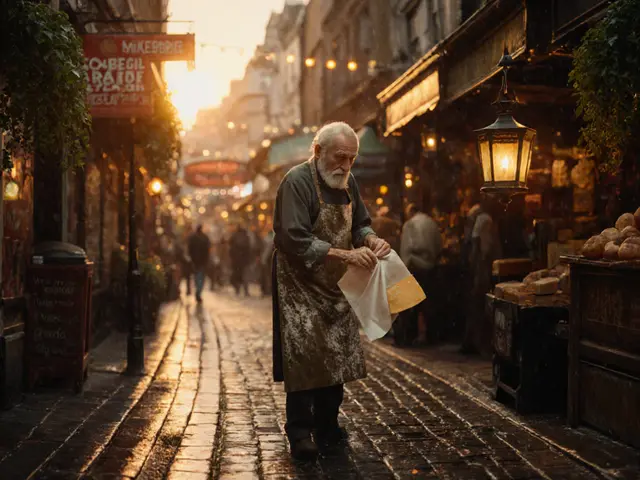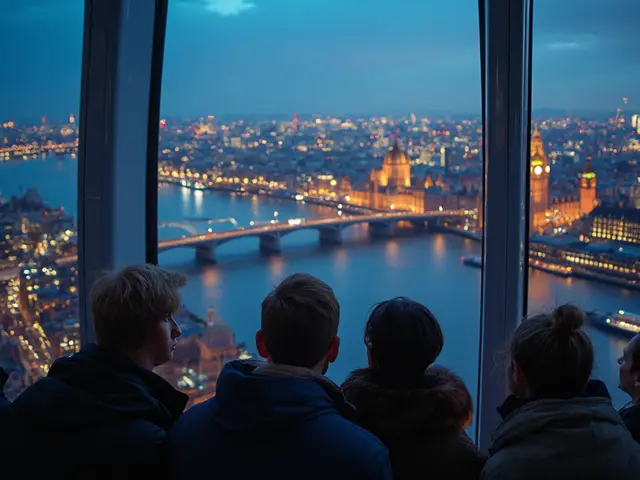Buckingham Palace isn’t just a postcard symbol—it’s a living part of city life in London. Most locals can spot it from the tops of passing buses or during a late-night walk along The Mall, but this royal landmark is far more than a grand backdrop for tourists. It’s where history, tradition, and everyday London meet right in SW1.
If you time your morning right, you might catch the Victoria Memorial sparkling as commuters snake past on their bikes, dodging the selfie-takers. The Changing of the Guard? It’s a ceremony many Londoners have watched at least once—some even plan lunch breaks around it, grabbing a Pret sandwich and propping up against the palace railings for the show.
- Living History in London’s Heart
- The Royal Pulse: Daily Rituals and Ceremonies
- Behind the Gates: Seasonal Insights for Locals
- Sharing Traditions: How Londoners Feel the Palace
- Tips for Getting the Most Out of a Visit
Living History in London’s Heart
Anyone who’s lived in London for a while knows Buckingham Palace isn’t just for the tourists. Right in the centre of the city, it’s the workplace and sometimes home for the monarch and seen as the main headquarters of the Buckingham Palace operation. Most government guests and dignitaries coming to London get invited here—curious fact: there are actually 775 rooms in the palace, including 52 royal and guest bedrooms and 19 State Rooms. The public can tour those State Rooms for around ten weeks each summer. Bookings usually open in spring on the Royal Collection Trust website, and Londoners often snap up those slots early to avoid the crowds.
People sometimes forget the Palace was originally called Buckingham House. It became the official royal residence in 1837 when Queen Victoria moved in, and since then, it’s survived Blitz bombings (nine hits during WWII) and a handful of intruders, most famously Michael Fagan in 1982. The building faces Green Park and sits at the end of The Mall—an open walkway that’s closed off to traffic during big royal events like Trooping the Colour every June.
The Palace’s balcony isn’t just famous from TV. Londoners know it as the rallying point for royal celebrations—most recently the Platinum Jubilee in 2022. This bit of tradition is woven into city life, from local shop displays in Mayfair to debates in neighbourhood pubs about the future of the monarchy.
| Year | Key Event at Buckingham Palace |
|---|---|
| 1837 | Becomes official royal residence |
| 1940 | Bombed during the Blitz |
| 1982 | Michael Fagan breaks in |
| 2022 | Platinum Jubilee celebrated |
For anyone living or working in central London, the Palace is more than a photo op—it’s a working part of the city. During big events, tubes at Green Park and Hyde Park Corner are usually packed, and buses like the 11, 211, and C1 become the quick alternatives. It’s smart to check TfL updates if you’re planning to pass through during state visits or parades. Buckingham Palace, even with all the tradition, is a bit of living history right on London’s doorstep.
The Royal Pulse: Daily Rituals and Ceremonies
Ask anyone living in London—Buckingham Palace keeps a steady rhythm with its royal routines. The most famous is the Changing of the Guard. It kicks off at 11:00 am, but locals know the crowds start building well before, especially in summer. The event runs on select days (usually Monday, Wednesday, Friday, and Sunday), so always check the official schedule before trekking out. It’s not just for tourists: plenty of families in Pimlico and Westminster make a day of seeing the Guards, who come from active-duty regiments like the Grenadier Guards, decked in red tunics and bearskin hats.
The Royal Standard flag is a key detail. If it’s flying above the palace, that means the King is in residence. Otherwise, you’ll see the Union Jack. Little things like this have shaped how people in London interact with the Buckingham Palace—it’s easy to catch school kids craning their necks on school trips to spot which flag is up.
Rituals go beyond just the Guards. Look out for mounted troopers zipping along Constitution Hill during ceremonial events. For London’s big moments—the Platinum Jubilee, Trooping the Colour, state visits—traffic reroutes and the city seems to organize itself around the palace. If you ride the Victoria Line, expect extra stops at Green Park on big parade days, and even planned closures if crowds are huge.
Daily rituals also shape security and flow around the gates. For example:
- At set times, the Queen’s Guard take up position in front of the palace—catch them at close range on St. James’s Park side for fewer crowds.
- Palace gates open for the famous State Rooms tours from July to September, with footmen in full livery welcoming guests.
- When state carriages roll out, you’ll hear the distinct clatter down Birdcage Walk—London taxi drivers even give updates on the best detours for locals.
It’s this drumbeat of tradition that helps keep London and the Royal Family connected, turning daily routines into pieces of living history anyone can witness, even on the way to the Tesco Express.

Behind the Gates: Seasonal Insights for Locals
While tourists line up year-round, it’s the Londoners who know when Buckingham Palace really opens up. The State Rooms are only accessible for about ten weeks every summer – usually from late July to late September. Locals use this window to sneak a peek inside the palace instead of just hanging around outside its gates. Tickets go fast, so booking as soon as dates are announced (usually spring) is key. The Royal Collection Trust’s website is the legit place for tickets—don’t get stung paying double on resale sites.
Inside, the State Rooms are packed with British history and art. Locals know to look out for paintings by Rembrandt and Vermeer, and it’s a good place to spot the lavish ballroom where state banquets happen. If you want to avoid the crowds, never go on weekends or in the first two weeks of opening—weekdays in mid-August are the quietest time to visit.
One thing Londoners share with new arrivals: the annual Garden Parties, which take place in May, June, and July. Most people can only dream of getting an invite, which come by nomination from charities, community groups, or as a reward for public service. If you know someone who works in the NHS or volunteers locally, they might know a thing or two about the famous cucumber sandwiches and the house-blend Earl Grey served in the garden behind those gates.
Even outside summer, locals pay attention to the Royal Standard flag. When the flag is up, it means the King is in residence. During late December and Easter, the palace tends to be quieter, as the Royal Family is away at Sandringham or Windsor.
For those living in London, simply walking through Green Park or St James’s Park during these off-peak months is a tip in itself—no crowds, peaceful views, and that sense that you’re passing by the heart of British tradition without the hassle.
| Season | Event/Openings | Insider Tip |
|---|---|---|
| Summer | State Rooms open | Book early; visit midweek in mid-August for fewer crowds |
| Spring/Summer | Garden Parties | Local nominations; keep an ear out for invites via community groups |
| Winter/Easter | Royal Family away | Spot the Union Flag; enjoy the quieter grounds |
Sharing Traditions: How Londoners Feel the Palace
For anyone living in London, Buckingham Palace is more than a tourist must-see—it’s part of the daily pulse. When the Royal Standard flag flies, Londoners know the King is in residence. You'll often hear chatter on the Tube about it, especially around big royal events. The palace builds a sense of unity during those street parties, the kind that spill out into neighbourhoods from Hackney all the way to Richmond whenever there’s a major royal celebration.
During Trooping the Colour every June—King Charles’s official birthday—not only do soldiers fill the site in their red tunics, but you’ll spot families camping out along The Mall, packed with sandwiches from Tesco and Union Jacks from the pound shop. It’s a tradition to complain about the crowds but still sneak down and peek at the flypast with your mates after brunch.
Most Londoners have an opinion on the Royal Family’s role, but even skeptics get swept up in the pageantry. The Palace lights up on big nights: think VE Day, Platinum Jubilee, or the New Year’s Eve fireworks reflecting in the gilded gates. Locals will tell you about impromptu street parties in places like Notting Hill or Peckham after a royal wedding—something you won’t get just from Instagram snaps.
NHS workers, postal staff, and charity volunteers can sometimes find themselves getting invited for special garden parties—one of those perks you won’t see on the regular tours. Schools in London often organize end-of-year reward trips to see the palace, sneakily mixing tradition with a day off from uniform rules.
Here’s what stands out about how London residents connect with royal traditions:
- Public Holidays: During royal weddings or jubilees, it’s common for shops to close early, and even big brands like Sainsbury’s alter their hours for the celebrations.
- Community Events: Many London boroughs hold local history days or open-air movie nights themed around Buckingham Palace stories—look out for flyers at the local library or school notice boards.
- Charity Fundraisers: Some locals use royal anniversaries as a reason for bake sales or marathons, often with proceeds supporting London-based charities.
The palace’s presence is woven through local life, and it isn’t just something for tourists snapping photos—it’s right there in family memories, in the headlines of the Evening Standard, and in queues for coffee along Victoria Street.

Tips for Getting the Most Out of a Visit
If you're planning to see Buckingham Palace while you're in London, a few practical tips make a huge difference. First up: the State Rooms. These only open to visitors from July to September, so set a reminder to book tickets early. Last year, slots were snapped up weeks in advance, especially for weekend afternoons.
Next, plan around the Changing of the Guard. It usually happens at 11:00 am on Mondays, Wednesdays, Fridays, and Sundays, but always double-check on the official Royal Family website since the schedule can shift for weather or special events. Arrive by 10:15 am to find a good spot behind the fences. Try the Victoria Memorial or the path leading to St James’s Park for better photo angles and fewer crowds than right out front.
- Public toilets are available in St James’s Park, about a 5-minute walk away—super handy if you’re with kids or in a queue.
- If you love London souvenirs, the Royal Collection Trust shop inside the palace (during State Room openings) and the shop on Buckingham Palace Road have some genuinely nice, UK-made options—not just the usual fridge magnets.
- The palace is close to Green Park and Victoria stations. Piccadilly Line gets you out at Green Park for a short stroll under those iconic London plane trees.
If you want to avoid the thickest crowds, weekdays tend to be better—avoid Saturday afternoons, especially during Bank Holiday weeks. For access needs, the palace offers step-free routes; just mention it when booking. There’s also a handy audio guide included with your State Room ticket, and it comes in multiple languages—not just English and French, but Korean and Japanese too.
| Best Time to Visit | Crowd Level |
|---|---|
| Weekday mornings (July-Sept) | Low to medium |
| Weekends | High |
| During Guard Change | Very High |
If you’re a London resident, check out late afternoon time slots—they’re quieter, and you sometimes catch the soft golden glow on the front gates for the best social snaps. Also, don’t miss the Royal Mews just around the back, where you can see the famous Gold State Coach.
Finally, keep an eye out for the Royal Standard flag—it means the King is home. That’s always a conversation starter, even for born-and-bred Londoners.



